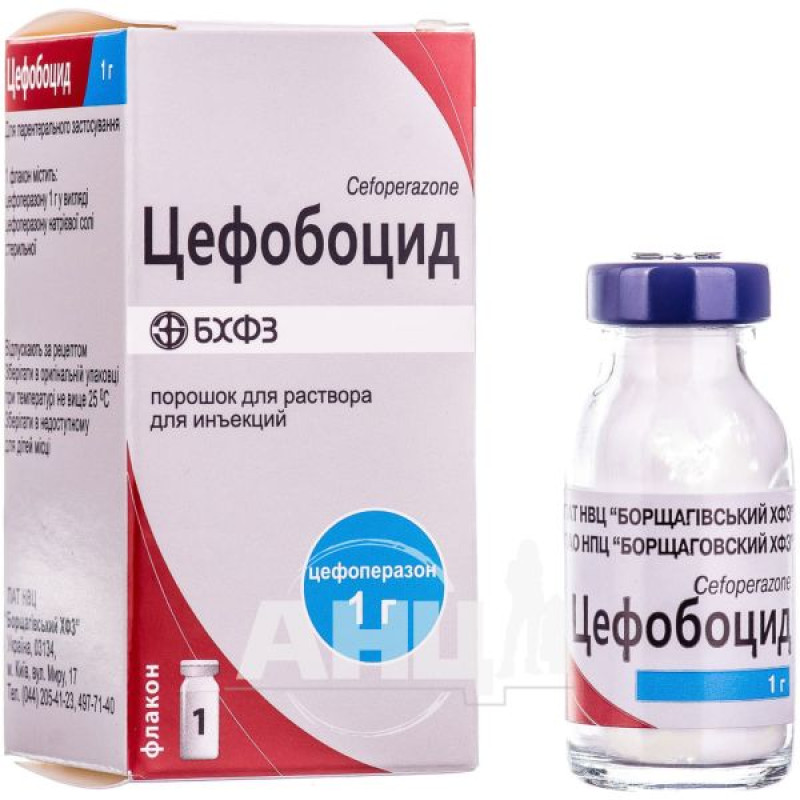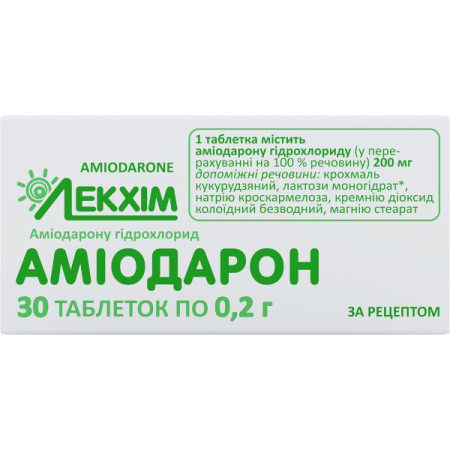Cefobact powder for solution for injection 1 g vial No. 1

Cefobact powder for solution for injection is indicated for the treatment of infectious processes caused by microorganisms sensitive to Cefobact:
Upper and lower respiratory tract infections; Upper and lower urinary tract infections; Peritonitis, cholecystitis, cholangitis and other intra-abdominal infections; Septicemia; Meningitis; Skin and soft tissue infections; Bone and joint infections; Pelvic inflammatory disease, endometritis, gonorrhea and other genital tract infections.Prevention of infectious postoperative complications during abdominal, gynecological, cardiovascular and orthopedic surgeries.
Composition
Active ingredient: cefoperazone;
1 vial contains 1 g of cefoperazone as sterile cefoperazone sodium salt.
Contraindication
Hypersensitivity to cephalosporins and other β-lactam antibiotics.
Method of application
In the absence of contraindications, before starting treatment with the drug, an intradermal test for hypersensitivity to cefoperazone should be performed. When using lidocaine as a solvent (for intramuscular administration), it is necessary to take into account the safety information on lidocaine and perform a skin test for hypersensitivity to it.
Use intravenously and intramuscularly.
Application features
Pregnant women
The drug should be used during pregnancy only if absolutely necessary and after careful assessment of the risk/benefit ratio.
Children
Cefobacide can be used to treat children of all age groups.
Drivers
Experience with the clinical use of cefoperazone indicates that the drug is unlikely to affect the patient's ability to drive or operate machinery.
Overdose
Data on the acute toxicity of cefoperazone sodium are limited.
Symptoms: the expected manifestations of overdose are, first of all, an increase in the manifestations of side effects. It should be taken into account that high concentrations of beta-lactam antibiotics in the cerebrospinal fluid can cause neurological effects and convulsions.
Treatment: drug withdrawal, symptomatic and supportive therapy. In case of convulsions, sedative therapy is necessary. Hemodialysis is possible to accelerate the elimination of the drug, especially in patients with impaired renal function.
Side effects
Skin and subcutaneous tissue: allergic skin reactions (including maculopapular rash, urticaria, erythema, exfoliative dermatitis, toxic epidermal necrolysis, Stevens-Johnson syndrome), itching. Blood and lymphatic system: leukopenia, lymphopenia, neutropenia (with prolonged use, reversible), eosinophilia, thrombocytopenia, bleeding, decreased hemoglobin, hematocrit, anemia, hypoprothrombinemia, prolonged prothrombin time, coagulopathy. Digestive tract: nausea, vomiting, loose stools / diarrhea. These reactions are usually mild or moderate. Hepatobiliary system: increased levels of ALT, AST, alkaline phosphatase, bilirubin; jaundice. Cardiovascular system: hypotension, hot flashes, bradycardia/tachycardia, cardiogenic shock, cardiac arrest. Nervous system: oral mucosal hyperesthesia, restlessness, headache, dizziness. Human anatomical models: hypercreatininemia, transient increase in blood urea nitrogen, hematuria. Effects due to biological action: possible development of superinfection (including candidiasis, genital mycosis) caused by resistant microorganisms, pseudomembranous colitis. Local reactions: pain at the site of intramuscular injection. During infusion, phlebitis at the injection site may develop. Others: vitamin K deficiency, false-positive results in determining the content of glucose in the urine by non-enzymatic methods and in performing the Coombs test.Interaction
Alcohol (ethanol): due to the risk of disulfiram-like reactions (hot flashes, sweating, headache, tachycardia), patients should avoid alcohol and alcohol-containing drugs during treatment and for 5 days after its completion. When artificial nutrition (oral or parenteral) solutions containing ethanol should not be used. Nonsteroidal anti-inflammatory drugs, antiplatelet agents, vitamin K antagonists (e.g. warfarin), heparin: increased risk of bleeding. Allopurinol, ampicillin: significant increase in the frequency of skin rashes. Bacteriostatic antibacterial drugs (e.g. chloramphenicol, tetracycline): reduce the bactericidal effect of cefoperazone.Storage conditions
In the original packaging at a temperature not exceeding 25 °C.
Keep out of reach of children.
Shelf life - 2 years.
There are no reviews for this product.
There are no reviews for this product, be the first to leave your review.
No questions about this product, be the first and ask your question.

